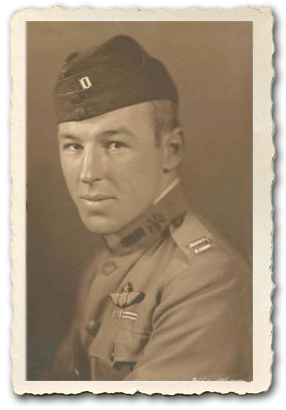Amidst all the great pulp thrills and features in Sky Fighters, they ran a true story feature collected by Ace Williams wherein famous War Aces would tell actual true accounts of thrilling moments in their fighting lives! This time we have German Flying Corp Sergeant Take Engmann’s most thrilling sky fight!
All the great heroes of the war in the 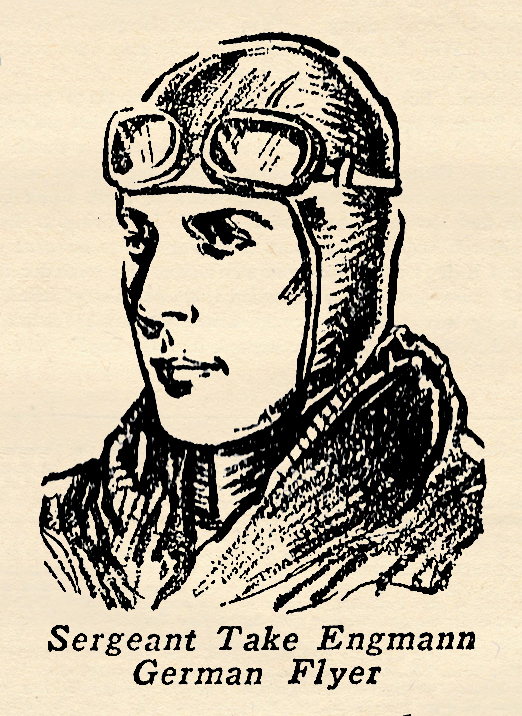 air did not fly single-seater fighting planes, and all of the heroes did not accomplish their missions single handed. Some of the great feats were accomplised by the pilots of the bigger, bulkier, clumsier, two and three-seater observation and bombing planes. Sergeant Engmann was one of the heroes of this latter class. Obscure, reticent, retiring by nature, his own part in the many successful missions accomplished by the greatest of all German observation aces, Captain Heydemarck, whose pilot he was, marks him as one of the outstanding flyers of the war.
air did not fly single-seater fighting planes, and all of the heroes did not accomplish their missions single handed. Some of the great feats were accomplised by the pilots of the bigger, bulkier, clumsier, two and three-seater observation and bombing planes. Sergeant Engmann was one of the heroes of this latter class. Obscure, reticent, retiring by nature, his own part in the many successful missions accomplished by the greatest of all German observation aces, Captain Heydemarck, whose pilot he was, marks him as one of the outstanding flyers of the war.
Between them, flying together, they accounted for over a dozen Allied Planes, despite the fact that destroying enemy aircraft was not their primary duty. The account below is from one of the few written records Engmann left.
AGAINST DESPERATE ODDS
by Sergeant Take Engmann • Sky Fighters, May 1935
CAPTAIN HEYDEMARCK was given the initial mission of photographing a Russian concentration camp in France and plotting it on our maps of the enemy terrain, so that our night bombers might attack it later. But we decided to do a little bombing of our own, so I loaded our plane to the limit with forty kilo bombs. The morning mists still lay on the hills and valleys of the Marne when we flew over the lines at 6 a.m.
By using the rising clouds as a mask for our entry, I managed to skip from one to another and keep concealed from enemy patrols. When we got over Mailly, the clouds had broken some, and the morning sun began to break through. The Russian camp lay beneath us.
I idled the motor and nosed down, leveled off when about 300 meters over the camp. Heydemarck snapped his pictures as I circled around. As soon as he had finished, I began dropping the bombs; one, two, three. They hit squarely in the center of the camp and set the barracks on fire. I headed for home.
But I had not gone far when I decided that the whole of the Allied air forces had been called on to intercept us. One after another French ships, Nieuports, Caudrons, Breguets, poked their noses through the rising mists to come hurtling at my Rumpler. I decided to make a bold show, so headed abruptly for the first Nieuport. Just as it commenced firing, I pulled into a swift turn, letting Heydemarck in the back seat take care of it, while I nosed up for the belly of another Nieuport.
Heydemarck’s guns and mine spoke at the same instant, two short bursts! My Nieuport slid off on one wing, turned over, and went spinning down through the clouds. Heydemarck had managed to set fire to the other’s gas tank.
More enemy planes pounced on me swiftly. Heydemarck got his guns in action, but an enemy burst clicked a right strut. Another snapped a flying wire. My left wing dragged. I zigzagged, plunged into a cloud. Saw ten more enemy planes in a group when I came out. They attacked from all sides.
I don’t know what happened for several seconds. We went around and around. Heydemarck kept firing. I fired short bursts, wary of using all my ammunition.
Back and forth, over and up. Then a fast dive, a quick turn. Somehow I found myself in another cloud. The enemy guns were silent. Heydemarck was smiling.
In another moment the enemy formation met us again, guns blazing. I wheeled swiftly, darted back into the cloud. When I broke free of the mists, I had lost the enemy far off to my left. I banked again, raced in a straight line for the trenches. I could see them below. The Nieuports raced after me.
When I skirted over the trenches I was not more than 100 feet off the ground and traveling with the speed of light. Our Archies and machine-guns protected me.
We landed safely at Attigny, our pictures still intact. Not a bullet had touched them! Heydemarck pointed at our one remaining bomb: “What if one of their bullets had hit that detonator?” he said.
I had forgotten to drop it in the excitement of the fight. “Yes, what if one had?” I replied.
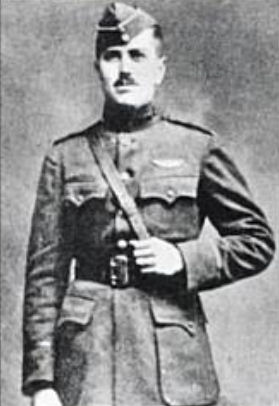 Flight Commander in the 95th Aero Squadron. He is credited with seven victories and was awarded the Distinguished Service Cross with oak leaf cluster, the French Legion of Honor, the Croix de guerre and the Order of the Crown of Belgium. Sewall was the first American aviator whose machine had been sent down in flames and lived to tell the tale!
Flight Commander in the 95th Aero Squadron. He is credited with seven victories and was awarded the Distinguished Service Cross with oak leaf cluster, the French Legion of Honor, the Croix de guerre and the Order of the Crown of Belgium. Sewall was the first American aviator whose machine had been sent down in flames and lived to tell the tale!




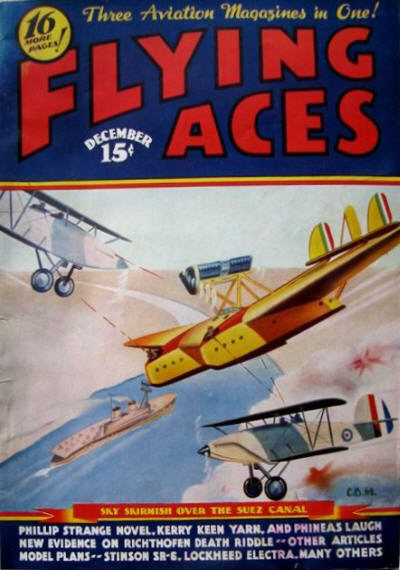 That sound can only mean one thing—it’s time to ring out the old year and ring in the new with that Bachelor of Artifice, Knight of Calamity and an alumnus of Doctor Merlin’s Camelot College for Conjurors—Phineas Pinkham.
That sound can only mean one thing—it’s time to ring out the old year and ring in the new with that Bachelor of Artifice, Knight of Calamity and an alumnus of Doctor Merlin’s Camelot College for Conjurors—Phineas Pinkham. 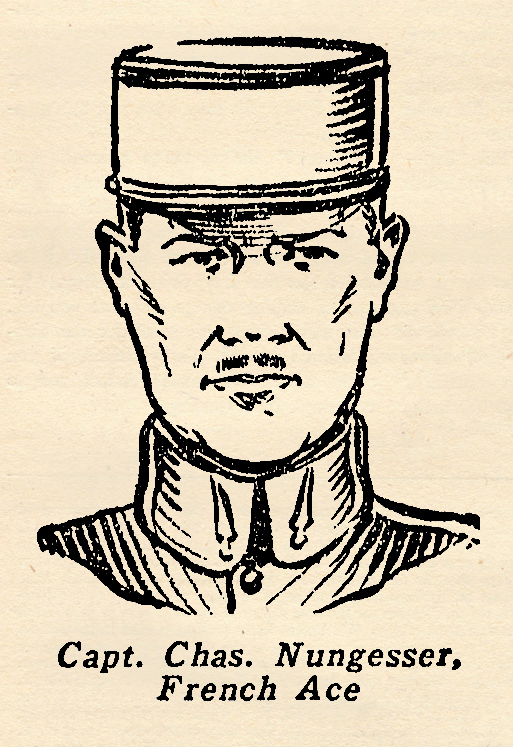 none is more poignantly remembered than Charles Nungesser, who began his flaming war career as a Lieutenant of Hussars and was one of that famous lighting band of cavalrymen that stopped the German Uhlans at the gates of Paris. For his exploits in this heroic stand he was awarded the Medal Militaire, the highest combat award.
none is more poignantly remembered than Charles Nungesser, who began his flaming war career as a Lieutenant of Hussars and was one of that famous lighting band of cavalrymen that stopped the German Uhlans at the gates of Paris. For his exploits in this heroic stand he was awarded the Medal Militaire, the highest combat award.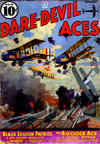
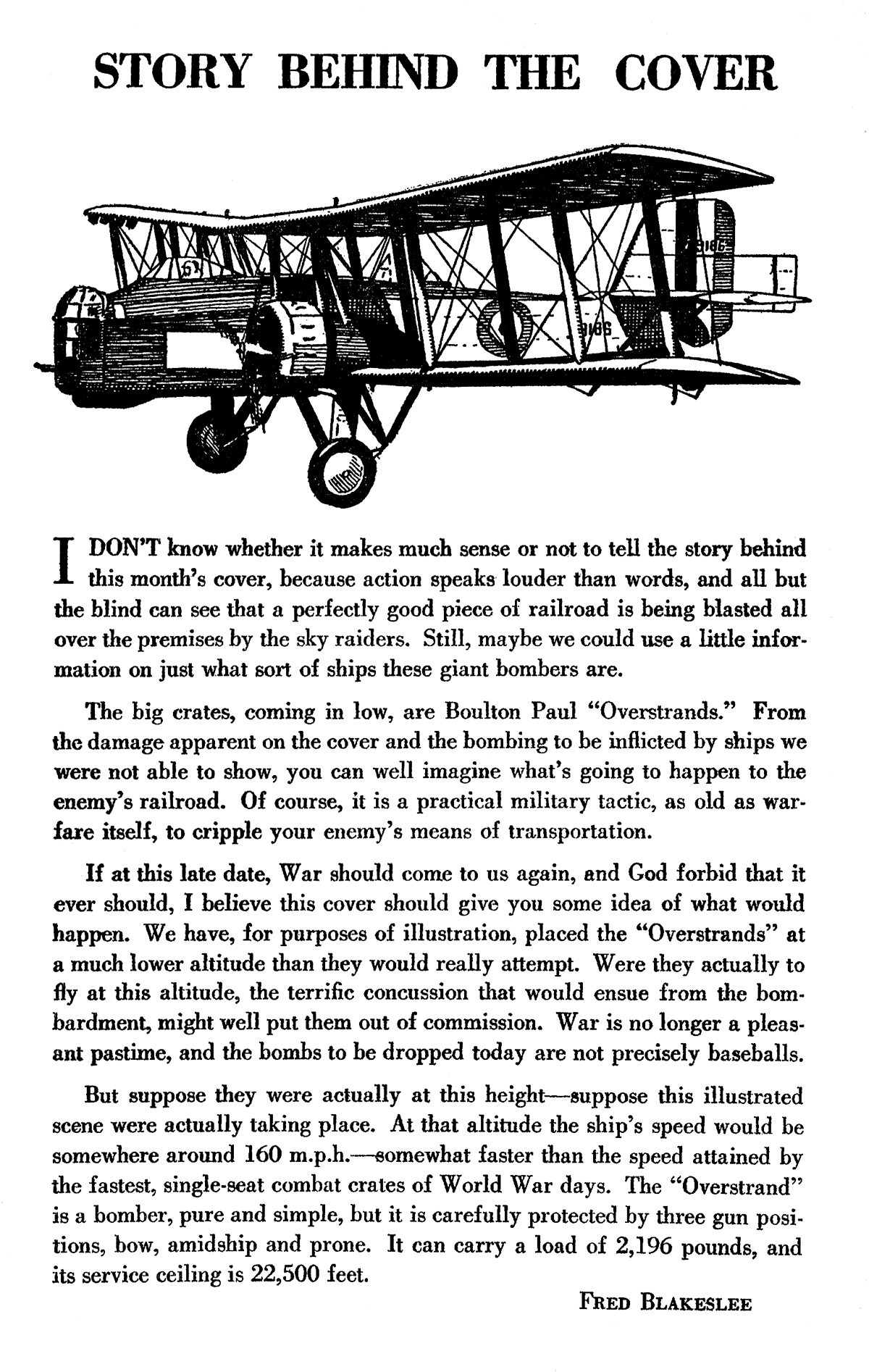
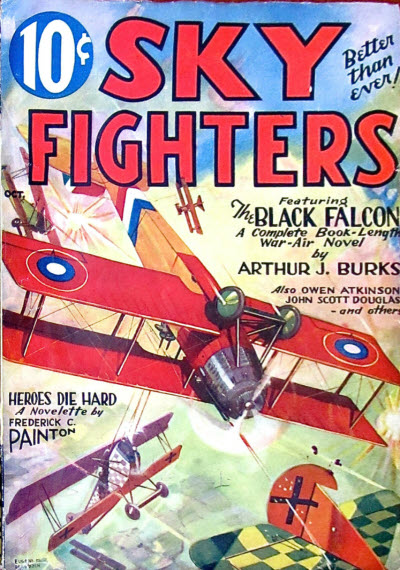 a story from the pen of a prolific pulp author and venerated newspaper man—Frederick C. Painton. In “Heroes Die Hard” Painton crafts a story of an immoral politician trying to use his carefully created war record to sweep him in to office when the war is over. The only problem is a man he wronged in the past who now stands in the way of his future! From the October 1933 issue of Sky Fighters, it’s “Heroes Die Hard!”
a story from the pen of a prolific pulp author and venerated newspaper man—Frederick C. Painton. In “Heroes Die Hard” Painton crafts a story of an immoral politician trying to use his carefully created war record to sweep him in to office when the war is over. The only problem is a man he wronged in the past who now stands in the way of his future! From the October 1933 issue of Sky Fighters, it’s “Heroes Die Hard!”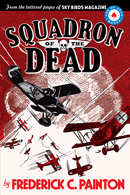
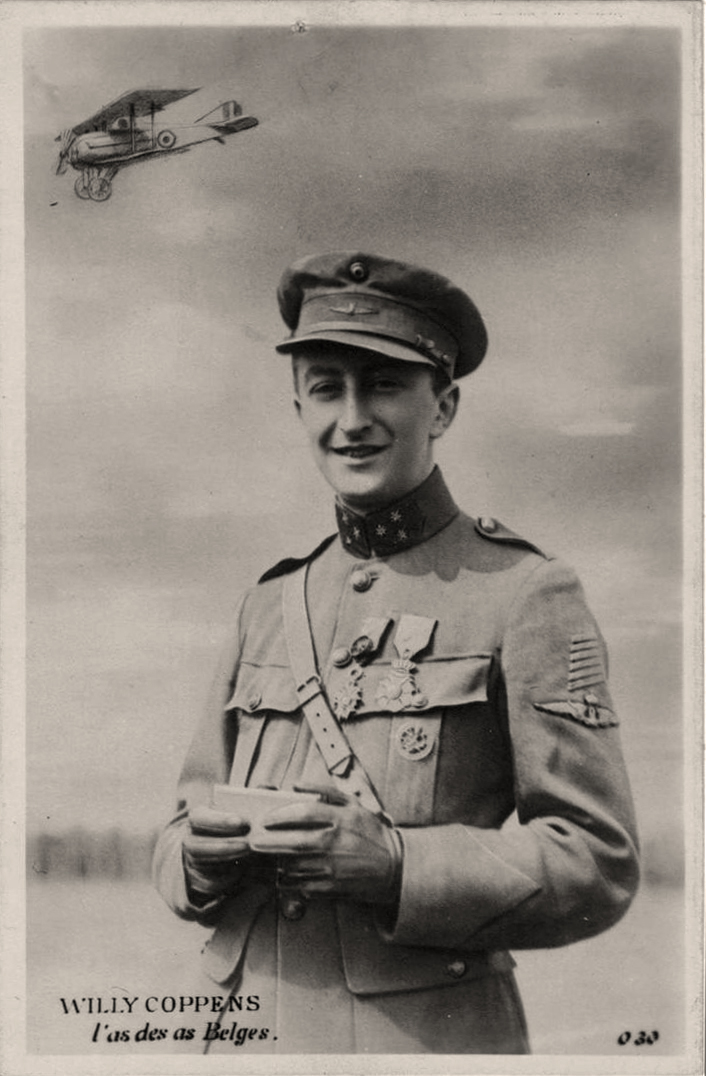
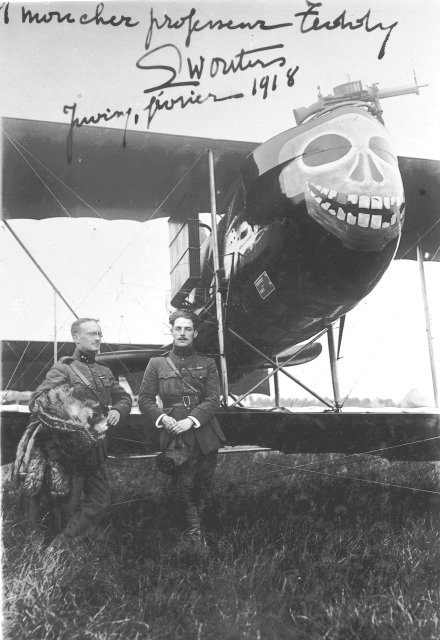
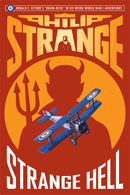 of Donald E. Keyhoe’s Philip Strange tales in the latest volume of his collected adventures—
of Donald E. Keyhoe’s Philip Strange tales in the latest volume of his collected adventures—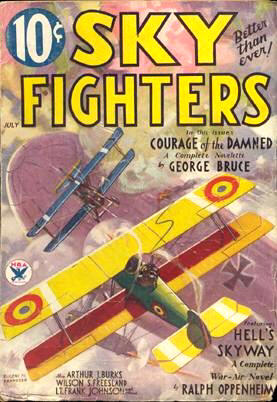 but Silent Orth is back! Silent Orth—ironically named for his penchant to boast, but blessed with the skills to carry out his promises—comes up against a trio of deadly marksmen who manage to take down their victims with but a single bullet! Orth must take down all three before fresh new recruits arrive the next day—The problem is, Orth has vowed to take each of them out with a single shot. From the July 1934 issue of Sky Fighters it’s Silent Orth in “Single Action!”
but Silent Orth is back! Silent Orth—ironically named for his penchant to boast, but blessed with the skills to carry out his promises—comes up against a trio of deadly marksmen who manage to take down their victims with but a single bullet! Orth must take down all three before fresh new recruits arrive the next day—The problem is, Orth has vowed to take each of them out with a single shot. From the July 1934 issue of Sky Fighters it’s Silent Orth in “Single Action!” air did not fly single-seater fighting planes, and all of the heroes did not accomplish their missions single handed. Some of the great feats were accomplised by the pilots of the bigger, bulkier, clumsier, two and three-seater observation and bombing planes. Sergeant Engmann was one of the heroes of this latter class. Obscure, reticent, retiring by nature, his own part in the many successful missions accomplished by the greatest of all German observation aces, Captain Heydemarck, whose pilot he was, marks him as one of the outstanding flyers of the war.
air did not fly single-seater fighting planes, and all of the heroes did not accomplish their missions single handed. Some of the great feats were accomplised by the pilots of the bigger, bulkier, clumsier, two and three-seater observation and bombing planes. Sergeant Engmann was one of the heroes of this latter class. Obscure, reticent, retiring by nature, his own part in the many successful missions accomplished by the greatest of all German observation aces, Captain Heydemarck, whose pilot he was, marks him as one of the outstanding flyers of the war.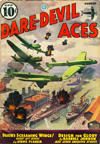
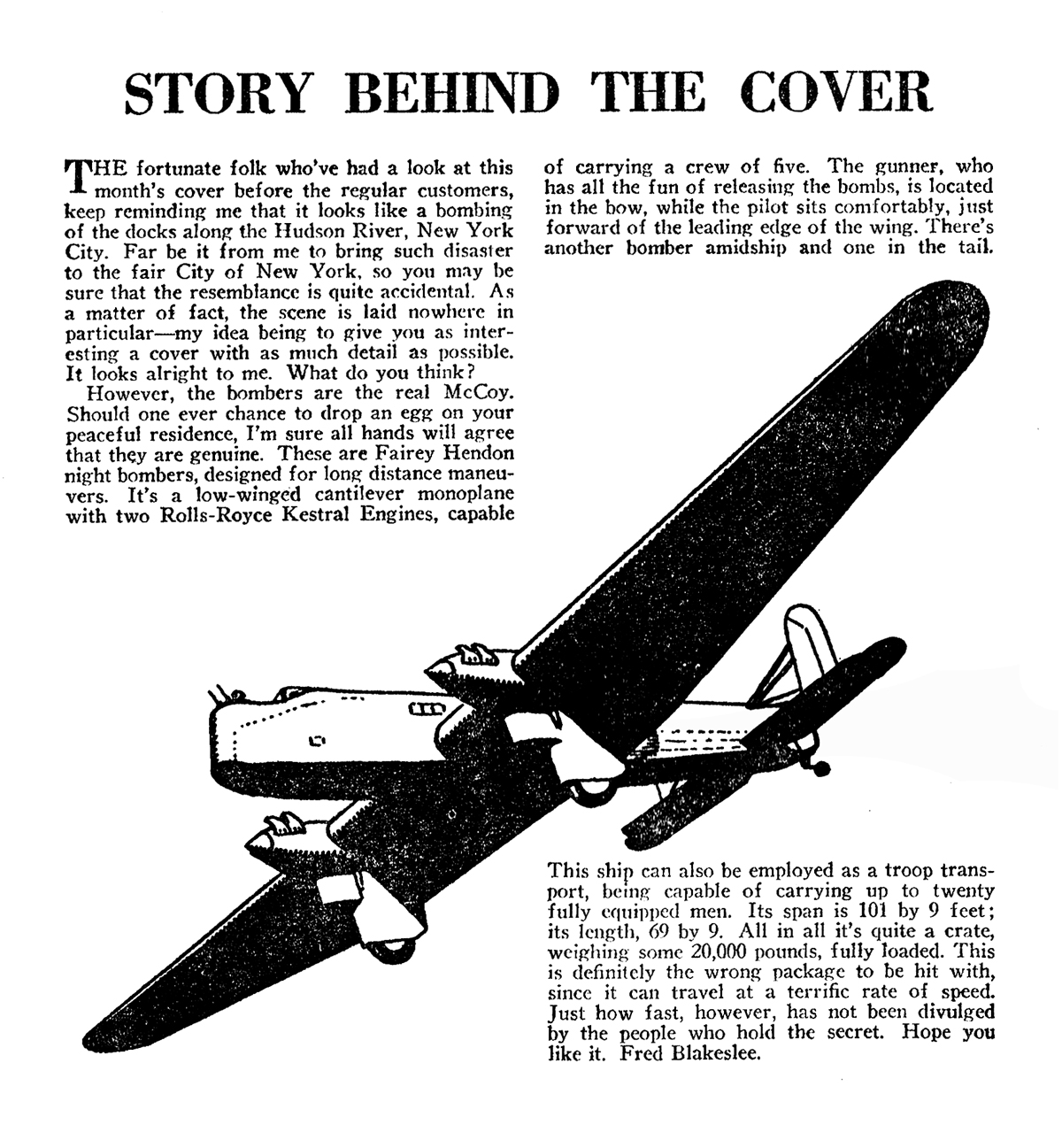
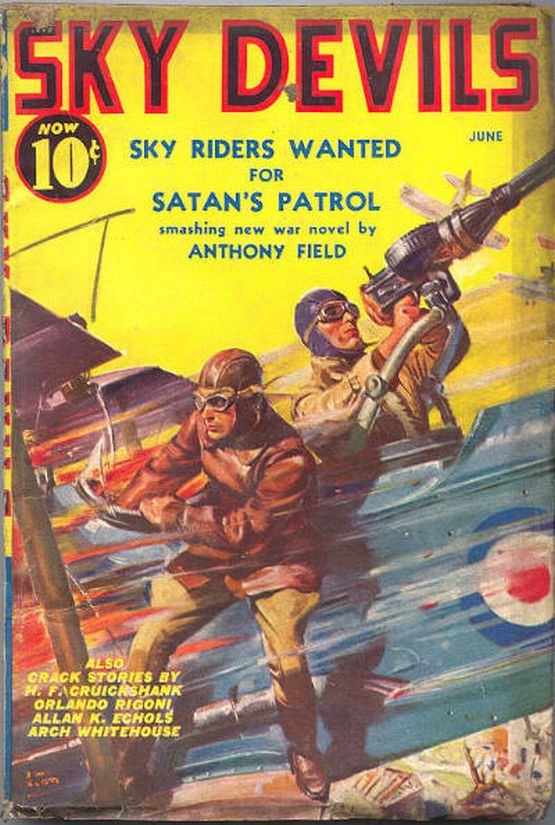 flew through the Hell Skies of 29 adventures in the pages of Dare-Devil Aces from 1932-1935. Cruickshank returned to the savior of the Western Front in six subsequent stories several years later. The first two were in the pages of Sky Devils (June 1939) and Fighting Aces (March 1940). The other four ran in Sky Fighters (1943-1946); and like Oppenheim had done with his Three Mosquitoes, so Cruickshank did with Sky Devil—he moved him to the Second World War where Bill Dawe changes his name to get into the air service and flys along side his son!
flew through the Hell Skies of 29 adventures in the pages of Dare-Devil Aces from 1932-1935. Cruickshank returned to the savior of the Western Front in six subsequent stories several years later. The first two were in the pages of Sky Devils (June 1939) and Fighting Aces (March 1940). The other four ran in Sky Fighters (1943-1946); and like Oppenheim had done with his Three Mosquitoes, so Cruickshank did with Sky Devil—he moved him to the Second World War where Bill Dawe changes his name to get into the air service and flys along side his son!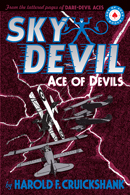 of Sky Devil and his Brood by Harold F. Cruickshank, check out our new volume of his collected adventures in
of Sky Devil and his Brood by Harold F. Cruickshank, check out our new volume of his collected adventures in 
